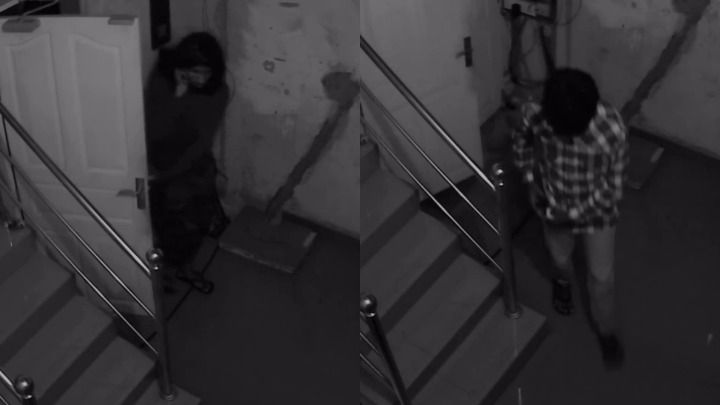On August 5, 2022, the peaceful city of Puerto Princesa in Palawan, Philippines, was shaken by a disturbing mystery: Jovelyn Galleno, a 22-year-old criminology student and saleslady at a boutique inside Robinsons Place Palawan, vanished without a trace after finishing her shift. What began as a missing person case quickly escalated into a national controversy, sparking public outrage, media attention, and deep frustration over the justice system’s handling of the case.
A Model Daughter, A Sudden Disappearance

Jovelyn was well-known in her community as a responsible and devoted daughter, a caring sister, and a hardworking student. She balanced her time between school and part-time work to support her family and was known to frequently update her mother and siblings about her whereabouts. But that day, she never came home. Her phone went silent. Panic set in.
Her family immediately reported her disappearance to the authorities and called on the public for help. Volunteers, police, and concerned citizens began combing through surrounding areas. Yet, despite extensive search efforts, days turned into weeks, and still, there was no sign of Jovelyn.
A Shocking Discovery—and Doubts That Followed

Three weeks later, in late August 2022, a set of human bones was discovered in a grassy field near a remote area. Authorities announced that a DNA test confirmed the remains belonged to Jovelyn Galleno.
But instead of bringing closure, the discovery only fueled more questions. Could a human body decompose into skeleton form in just three weeks, even in a tropical climate like the Philippines? Many experts and citizens alike cast doubt on the police’s conclusion. Critics argued that the state of the remains seemed inconsistent with the reported timeline, pointing to either mishandling of the evidence—or worse, a possible cover-up.
A Confession—and a Sudden Retraction
The case took another shocking turn when Leobert Dasmariñas, Jovelyn’s cousin, turned himself in and confessed to killing her. For a brief moment, it seemed the case would be solved. But just a day later, Leobert retracted his statement, claiming he had been coerced, threatened, and forced to confess.
This sudden reversal threw the case into deeper chaos. Why would someone confess to such a serious crime only to take it back the next day? Was he truly involved, or was he being used to quickly close a case under public pressure?
In response to the growing public outcry, the Philippine National Police (PNP) and the National Bureau of Investigation (NBI) launched further investigations. Polygraph tests were conducted, DNA tests were repeated, and media coverage intensified. But despite all these efforts, no concrete answers emerged. The case remained murky, contradictory, and unresolved.
Three Years Later: Still No Justice, Still No Truth

As of August 2025, three full years have passed since Jovelyn’s disappearance—and the mystery remains unsolved. Her family continues to cry for justice and demands clarity. Many Filipinos are still asking the same haunting question: Where is Jovelyn Galleno?
Rumors continue to circulate. Some claim they’ve seen Jovelyn alive in various places, including faraway cities like Cebu and Davao. Some speculate that she may have been kidnapped and forced into human trafficking. Others believe the entire case was mishandled from the start and that vital evidence was either ignored or intentionally buried.
What’s clear is that there’s a growing sense of distrust toward the system that was supposed to deliver justice.
A Mirror of a Flawed Justice System?

The case of Jovelyn Galleno has become more than a missing persons investigation—it’s a reflection of a justice system that many feel is broken. The way the case has been handled—from the questionable DNA results to the coerced confession—has led to widespread criticism of law enforcement procedures in the Philippines.
How could a confession be taken so quickly and publicized without clear corroborating evidence? Why was the investigation so hasty in declaring the case closed when there were so many inconsistencies? These questions are still unanswered.
The Galleno case underscores the dangers of rushing investigations, the importance of transparency, and the dire consequences of mishandled evidence. It also highlights how families of victims are often left in limbo—caught between official statements and their own instincts telling them something isn’t right.
Conclusion
Jovelyn Galleno’s disappearance is not just a personal tragedy—it’s a national reckoning. Her story remains etched in the minds of many Filipinos, not only because of the emotional weight it carries but also because it exposes deep cracks in the country’s law enforcement and justice systems.
Three years on, the question lingers: Is Jovelyn truly gone, or is she still out there, waiting to be found? Who is responsible, and why has no one been held accountable?
Until these questions are answered, Jovelyn’s case will remain a symbol—not only of a young life lost but of a justice system still struggling to prove that truth and accountability can prevail.